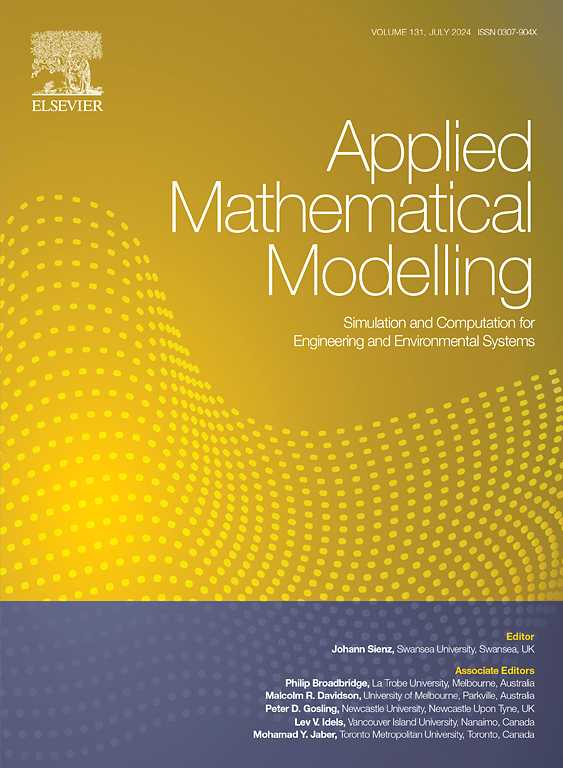曲线轨道对圆形隧道振动影响的列车-轨道-隧道耦合空间动力学模型
IF 4.4
2区 工程技术
Q1 ENGINEERING, MULTIDISCIPLINARY
引用次数: 0
摘要
本文建立了列车-轨道-隧道空间耦合动力学模型,该模型计算效率高,能有效地捕捉轨道曲线的影响和各子系统之间的空间动力学相互作用。模型将圆形隧道及注浆区简化为有限长双层圆柱壳,采用半解析法进行建模,提高了计算效率。采用粘弹簧统一人工边界模拟了周围土体的影响。经现场实测验证,将该模型应用于轨道弯曲对圆形隧道列车致振的影响评估。结果表明:列车在弯曲轨道上运行时引起的隧道振动与直线轨道有显著差异,降低列车运行速度不会单调地降低隧道振动;该模型能够更真实地评估圆形隧道的列车引起的振动,特别是在涉及弯曲铁路的情况下。本文章由计算机程序翻译,如有差异,请以英文原文为准。
A spatial train-track-tunnel coupled dynamics model for assessing influences of curved railway line on circular tunnel vibrations
A spatial train-track-tunnel coupled dynamics model is established in this paper, which exhibits high computational efficiency and can effectively capture the influences of curved railway lines and the spatial dynamic interactions between the subsystems. In the model, the circular tunnel and grouting area are simplified as a dual-layer cylindrical shell with finite length and then are modelled using semi-analytical method for high computational efficiency. The effects of surrounding soil are simulated using unified viscous-spring artificial boundaries. After being verified by the field measurements, the proposed model is employed to assess influences of curved railway line on the train-induced vibrations of circular tunnel. The results indicate that there are significant differences in tunnel vibrations induced by trains moving on curved railways compared to straight railways, and tunnel vibrations are not monotonously reduced by decreasing the train running speed. The model enables more realistic assessments of the train-induced vibrations of circular tunnels, particularly in the cases involving curved railways.
求助全文
通过发布文献求助,成功后即可免费获取论文全文。
去求助
来源期刊

Applied Mathematical Modelling
数学-工程:综合
CiteScore
9.80
自引率
8.00%
发文量
508
审稿时长
43 days
期刊介绍:
Applied Mathematical Modelling focuses on research related to the mathematical modelling of engineering and environmental processes, manufacturing, and industrial systems. A significant emerging area of research activity involves multiphysics processes, and contributions in this area are particularly encouraged.
This influential publication covers a wide spectrum of subjects including heat transfer, fluid mechanics, CFD, and transport phenomena; solid mechanics and mechanics of metals; electromagnets and MHD; reliability modelling and system optimization; finite volume, finite element, and boundary element procedures; modelling of inventory, industrial, manufacturing and logistics systems for viable decision making; civil engineering systems and structures; mineral and energy resources; relevant software engineering issues associated with CAD and CAE; and materials and metallurgical engineering.
Applied Mathematical Modelling is primarily interested in papers developing increased insights into real-world problems through novel mathematical modelling, novel applications or a combination of these. Papers employing existing numerical techniques must demonstrate sufficient novelty in the solution of practical problems. Papers on fuzzy logic in decision-making or purely financial mathematics are normally not considered. Research on fractional differential equations, bifurcation, and numerical methods needs to include practical examples. Population dynamics must solve realistic scenarios. Papers in the area of logistics and business modelling should demonstrate meaningful managerial insight. Submissions with no real-world application will not be considered.
 求助内容:
求助内容: 应助结果提醒方式:
应助结果提醒方式:


